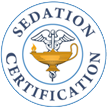DILAUDID® Hydromorphone HCl
Analgesic – Antitussive
Action and Clinical Pharmacology:
- Hydromorphone has a strong analgesic action and antitussive activity. Small doses of Hydromorphone produce effective and prompt relief of pain usually with minimal nausea and vomiting. Generally, when given parenterally, hydromorphone's analgesic action is apparent within 15 minutes and remains in effect for more than 5 hours. The onset of action of oral Hydromorphone is somewhat slower, with measurable analgesia occurring within 30 minutes. When sleep follows the administration of Hydromorphone, it is due to relief of pain, not to hypnosis.
- Hydromorphone is approximately 8 times more potent on a milligram basis than morphine. In addition, hydromorphone is better absorbed orally than is morphine; the former is approximately 20 to 25% as active orally as i.m.
- Hydromorphone has greater antitussive potency than codeine on a weight basis; however, its dependence liability is also greater than that of codeine.
- After absorption hydromorphone is metabolized by the liver to the glucuronide conjugate which is then excreted in the urine.
Indications And Clinical Uses:
- Relief of moderate to severe pain.
Contra-Indications:
- Intracranial lesion associated with increased intracranial pressure, status asthmaticus, and pulmonary edema.
Precautions:
- May be habit-forming. Hydromorphone is a narcotic with an addiction liability similar to that of morphine and for this reason the same precautions should be taken in administering the drug as with morphine.
- Pregnancy: As with all narcotics, hydromorphone should be used in early pregnancy only when expected benefits outweigh risks.
- If necessary, hydromorphone may be given i.v. but the injection should be given very slowly. Rapid i.v. injection of narcotic analgesic agents, including hydromorphone, increases the possibility of adverse effects, such as hypotension and respiratory depression.
- As with any narcotic analgesic agent, the usual precautions should be observed and the possibility of respiratory depression should be kept in mind. If a patient shows signs of hypersensitivity to hydromorphone the treatment must be stopped.
- Dilaudid injection has been reported to be physically or chemically incompatible with solutions containing sodium bicarbonate and thiopental sodium.
- Children: Hydromorphone suppositories are not recommended for use in children.
Adverse Reactions:
- Nausea, vomiting, dizziness, somnolence, anorexia and constipation may occur. Pain at injection site; local tissue irritation and induration following s.c. injection, particularly when repeated in the same area.
Symptoms and Treatment of Overdose:
- Symptoms: Serious overdose with hydromorphone may be characterized by respiratory depression (a decrease in respiratory rate and/or tidal volume, Cheyne-Stokes respiration, cyanosis), extreme somnolence progressing to stupor or coma, skeletal muscle flaccidity, cold and clammy skin, and sometimes bradycardia and hypotension. In severe overdosage, apnea, circulatory collapse, cardiac arrest and death may occur.
- Treatment: If significant respiratory depression occurs, it may be antagonized by naloxone as recommended by the manufacturer. Employ other supportive measures as indicated.
Dosage:
Orally for adults, 2 to 4 mg every 4 to 6 hours as required.
The usual adult parenteral dose for pain relief is 2 mg by s.c. or i.m. routes every 4 to 6 hours as necessary,
If necessary, hydromorphone may be given i.v., but the injection should be given very slowly.
Severe pain can be controlled with 3 to 4 mg every 4 to 6 hours as necessary.
Rectal suppositories (3 mg) provide long-lasting relief and are especially useful at night. The oral liquid may be diluted in fruit juice or other beverage, if desired.
I.V.: Initial: Opiate-naive: 0.2-0.6 mg every 2-3 hours as needed; patients with prior opiate exposure may tolerate higher initial doses.
Dilute 2mg one ml ampoule into 9cc’s of saline which is 0.2mg per ml.
Note: More frequent dosing may be needed.
